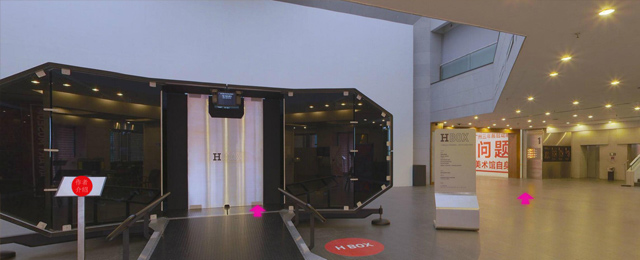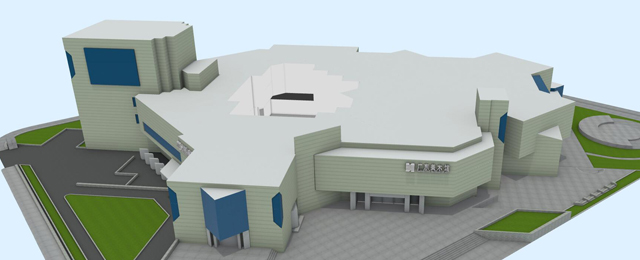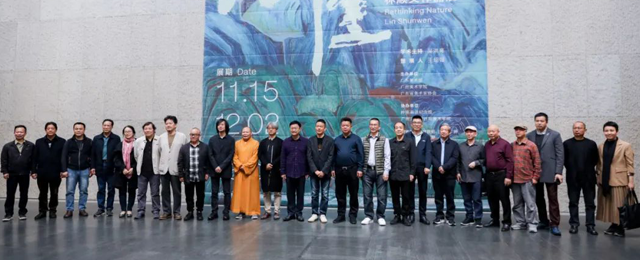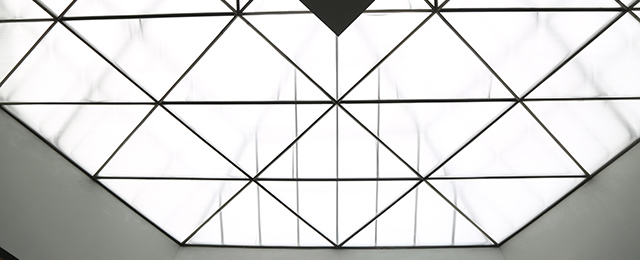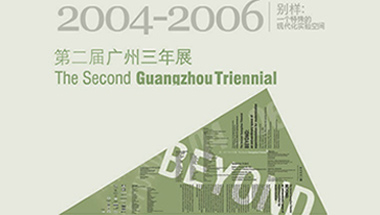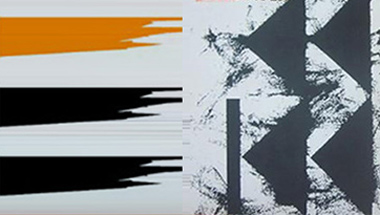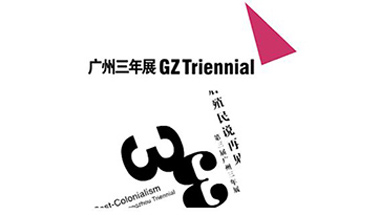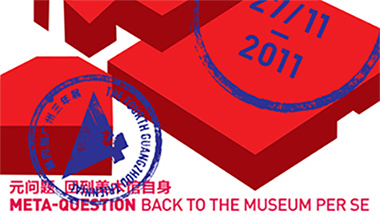有温度的存在——广州设计三年展2024
录入时间: 2024-01-16
有温度的存在——
广州设计三年展2024
将于1月17日开幕
The Warm - Beings:
Guangzhou Design Triennial 2024
will open on Jan 17th
2024年1月14日,首届“广州设计三年展”新闻发布会于广东美术馆召开,总策展人王绍强、主题策展人李德庚、社区平行展策展人胡智义、以及参展艺术家代表查朋·春鲁迪、刘珩出席。
此次新闻发布会对外介绍了本届“广州设计三年展”的总体情况:
由广东省文化和旅游厅指导、广东美术馆主办的“有温度的存在——广州设计三年展2024”开幕式将于1月17日举行,并在中午12点后对公众开放。
本次展览由广东美术馆馆长王绍强(中国)担任总策展人,维姬·理查森Vicky Richardson(英国)、又一山人(黄炳培)(中国香港)、李德庚(中国)、王乃一(中国)担任主题展策展人,胡智义Joseph Foo(马来西亚)担任社区项目策展人。
本次展览以“有温度的存在”为主题,通过主题展、资料文献展,以及多个社区项目/平行展,共同聚焦设计的人文关怀。
主题展邀请来自约27个国家和地区的近100位/组设计师、艺术家参展,向观众展示不同文化背景下有“温度”的设计,解析和呈现当下智慧又充满人文关怀的设计样本,促进当代设计及文化创意在中国社会长足的发展,为社会进步及文化、经济的可持续发展注入新的强有力的能量。

新闻发布会现场
据总策展人王绍强介绍,“有温度的存在”这一主题源于对现代主义的反思及对设计本质的重新审视。在当代语境下,设计作品中的“温度”日益重要。“温暖的设计”不仅赋予作品更深层次的文化内涵和人文价值,还能为人们带来更多精神诉求与情感共鸣,增加人们对设计作品的亲和力和认同感。
资料文献展以“时间印象”为主题,呈现现代设计的发展历程,共同探讨设计的现状与背后的文化价值。此外,本届展览还联合了部分优秀的社区项目,构成以“社区·设计”为主题的平行展,展现其中沟通和基层行动的力量,希望以此激励更多个人和社区通过设计推动教育和变革。
广东美术馆发起并自主策划的“广州三年展” 是我国最早的城市“双/三年展”之一,也是广东美术馆具有国际影响力的学术品牌。自本届展览筹备以来,获得了学界的广泛关注,多位对中国当代艺术和设计等领域具有较高关注度、敏锐度和观察力的专家学者共同组成本次“广州设计三年展”的策展和专家团队。
作为广州的城市名片和文化盛事,“广州三年展”已成功举办七届。2024年,广东美术馆守正创新,重磅推出“广州设计三年展”,为粤港澳大湾区乃至全世界搭建艺术与设计的桥梁,构设理论与实践的枢纽。
广东美术馆希望此次展览能进一步拉近大众与设计的距离,传递“温暖的设计”,力求为设计创作者提供探讨当下及未来设计研究观念、设计发展以及社会价值的平台。
主题展 Theme Exhibition
第一板块
SECTION I
策展人:王绍强、维姬·理查森
Curators:Wang Shaoqiang、Vicky Richardson
筑建的生命
Life of Architecture
芬兰建筑师尤哈尼·帕拉斯玛在20世纪90年代出版的《肌肤之目》一书中讨论了人与空间、建筑的关系。这种关系与真实而整体的感官体验紧密相连,“建筑之于人不仅仅是视觉性的理解;同时也是用脚丈量着道路的宽度和肌理,以身体的重量与厚重的大门相遇的种种体验……”,于此材料、材质、色彩与结构等等都特定的环境下在激发着人的行为反应与情感感受。人们在空间中真实的行为和互动,完整了建筑空间的意义。建筑所庇护的不仅是身体,还有心灵、情感与思想。它为人类间的关系建立了物质场域,同时也在情感与环境,当下与历史线索中,抵达一种平衡。在今天,我们希望这样的平衡和筑建是具有具体的功能意义并保有情感温度的;它包含了对社会群体的关注,能够在文化亲密感中形成一种连接,维护人、空间与自然的尊严。
如果语言是思维阐释的载体,那么人们在空间中所进行的筑建,正是人类思考与情感对现实世界的具体回应。“具体”与普适性中“平滑的想象”相异,意味着对地域性、文化观察、群体研究等特殊性的思考。在这一板块中,我们试图将空间的筑建呈现为一种连接的建立。一方面,它桥接着人群活动与场域空间,通过建筑与气候地景、自然生态,风俗文化的融合,使人类活动成为环境系统中的一部分。20 世纪 60 年代,意大利建筑师保罗·索勒瑞提出了“生态建筑学”的概念,将建筑学与生态学系统地整合于一体。对此,日本建筑师安藤忠雄建造的直岛地中美术馆曾予以回应:建筑消隐于自然的延伸。而以来自原生环境中的材料进行筑建,一石、一瓦、一木 …… 所营造的深入人心的情感及文化的亲密感,不仅消解了人为空间的介入性,同时,暗含于其中的土地尊严与文化血脉之间的联系,将人类之间连接得更加紧密。另一方面,这样的连接亦是空间嵌入于时间的连接,它桥接着对在地历史的理解和对未来生存的展望。筑建的生命同样包括了赋予建筑生命更新的力量,旧建筑的再造使建筑本体不因时代与功能被荒废,而是在不断桥接新的空间想象。这份想象与时间有关,对在场者平等地悦纳。
Finnish architect Juhani Pallasmaa discussed the relations between humanity, space and architecture in his book The Eyes of the Skin in 1990s. These relations are closely tied to the real and holistic sensory experience, because “architecture for human is not just a visual understanding, but also the experience to measure the width and texture of the road with our feet and to meet the heavy gate with the weight of our body, and to experience…” Materials, textures, colors and structures, among other things, in a specific environment, elicit people's behavioral responses and emotional feelings. The real behaviors and interactions of people in the space render the meaning of architectural space complete。 Architecture shelters not only our body, but our heart, emotions and mind. While providing a physical field for human relationships, it also offers a balance between emotions and environments, present and historical threads. Today, we that such balance and architecture could reveal specific functional significance and exude emotional warmth. Concerning itself with social groups, it builds up a connection in cultural intimacy to safeguard the dignity of people, space and nature.
If language is the carrier of thinking interpretation, then construction in space constitutes the concrete response of human beings, both in thinking and in emotion, to the real world. “Concrete” is different from the universal “smooth imagination”. It intends the reflection on the particularity of regionalism, cultural observation, group research and so on. In this section, we seek to present the construction for space as a building of connection. It links up crowd activities to field space. As architecture blends into climate landscape, natural ecology, customs and culture, human activities become part of the environmental system. In the 1960s, Italian architect Paola Soleri came up with the concept of “Arcology”, systematically integrating architecture and ecology into one. As a response, the Chi Chu Art Museum built by Japanese architect Tadao Ando sent a message that architecture disappears into the extension of nature. When building with materials from the original environment, be it stone, tile, or wood, the resulting deep emotional and cultural intimacy not only dispels the intervention of artificial space, but also brings human beings closer together with the relation between land dignity and cultural bloodline. On the other hand, such a connection is also a connection between space and time, linking up the understanding of local history with the vision of future existence. Likewise, Life of Architecture also contains the power to renew the life of buildings. Reconstruction of an old building prevents the building itself from being abandoned due to the difference of time and functions. Rather, it constantly develops connection with new spatial imaginations. The imaginations are related to time, accepting those present pleasantly and equally.
策展人王绍强
Curator:Wang Shaoqiang
家为温度的存在
Houses for Warm-beings
“对我来说,所有与人类有关的都是亲切的。”
—— 特伦斯
大约在公元前 160 年,非洲 / 罗马剧作家特伦斯写道:“对我来说,所有与人类有关的都是亲切的。”看着采访者与建筑师的对话,我不由得想起了这句话。这里展示了每位建筑师为“有温度的存在”设计的家。
无论是我们在体悟一处空间时所表现出的同理心,还是我们在共同创建一座建筑时所结成的纽带,抑或是我们对一个地方所形成的跨越时间的记忆,建筑都是人性的外在表现,让我们更好地认识自己。
这里所展示的建筑师来自不同的年代,他们有着不同的文化和地理背景。年轻的英国作家妮玛·默里和特斯霍姆·道格拉斯·坎贝尔通过与建筑师们的一系列对话,生动地呈现了他们的作品:布恩瑟姆·普莱姆塔达的“大象之家”;维努·丹尼尔的“音乐家之家”;阿帕拉塔建筑事务所的“艺术家之家”;北京别处空间建筑设计事务所的“儿童之家”;以及阿里雷萨·塔格哈勃尼的“诗人之家”。
年轻的英国建筑师尼古拉斯·巴林顿·利奇和凯伊·宋的摄影专题文章以其文字之光照亮了美术馆的空间,娓娓道出他们深深钦佩的前辈建筑师蕾尼·加尤斯特 (1929-2023) 和肖恩·德·布拉卡姆 (1945-) 所取得的杰出成就。在这里,我们能看到一些闪耀着熠熠人性光辉的生活和学习场所。这些建筑凝聚了设计师的妙思与灵感,令人心生敬慕,而又毫无高不可攀之感。而有温度的存在入住其中,尤如画龙点晴,使其成为真正意义上的建筑。
由阿帕拉塔建筑事务所设计的书凳,更创造了一个安静的空间。在这静谧的一角空间里,您可以与人同座,安静阅读建筑师所推荐的书籍,在幽幽书香之中,与作者进行跨越时间和空间的思想对话。
‘Homo sum, humani nihil a me alienum puto’,
—— Terence
‘Nothing human is alien to me’ wrote the African / Roman playwright Terence in about the year 160 BC. It’s a phrase that came to me when I was reading conversations with the architects exhibited here, each of whom has designed a house for ‘warm beings’.
Whether speaking about the empathy of people in being able to understand a place, the bonds that are made between people when making a building, or the memories of people transmitted across time within places, architecture is an expression of humanity and a way of understanding who we are.
The architects exhibited here come from different generations and a variety of cultural and geographic backgrounds. Five houses are discussed through a series of conversations with young British writers Nyima Murry and Teshome Douglas-Campbell: a House for Elephants by Boonserm Premthada; a House for Musicians by Vinu Daniel; a House for Artists by Apparata; a House for
Children by BCKJ Architects, and a House for a Poet by Alireza Taghaboni.
Weaving through the centre of the space are photographic essays by young British architects Nichola BarringtonLeach and Kaye Song reflecting on the achievements of older architects they admire: Renée Gailhoustet (1929-2023) and Shane de Blacam (1945-). Here we see some of the most humane places for living and learning, buildings that are designed to be inspiring without being intimidating and have been completed as architecture by being inhabited.
A book-bench designed by Apparat provides a quiet space to sit with others and read books chosen by the architects as a means of transmitting ideas across time and space.
策展人维姬·理查森
Curator: Vicky Richardson
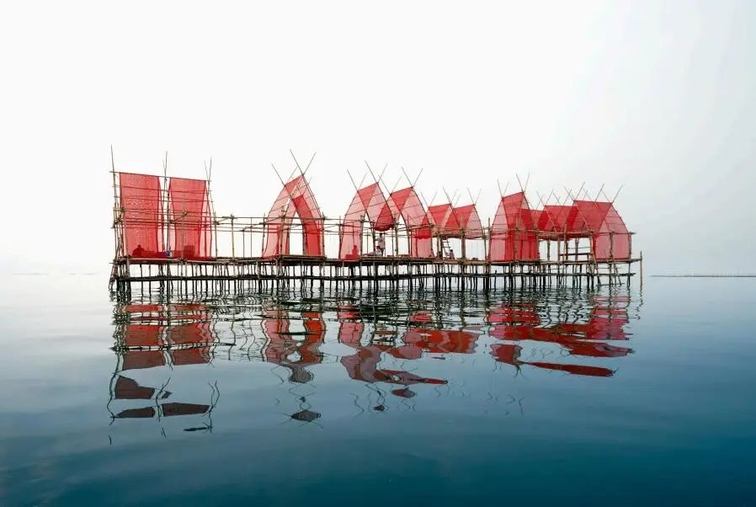
安琪拉牡蛎脚手架
查朋·春鲁迪(泰国)/ 查特建筑事务所
Angsila Oyster Scaffolding
Chatpong CHUENRUDEEMOL(TH) / CHAT Architects
2023

大理洱海生态驿站
孟凡浩(中国)/ Line+建筑事务所
Dali Erhai Lake Ecological Rest Station
Meng Fanhao(CN) / Line+ Studio
2022
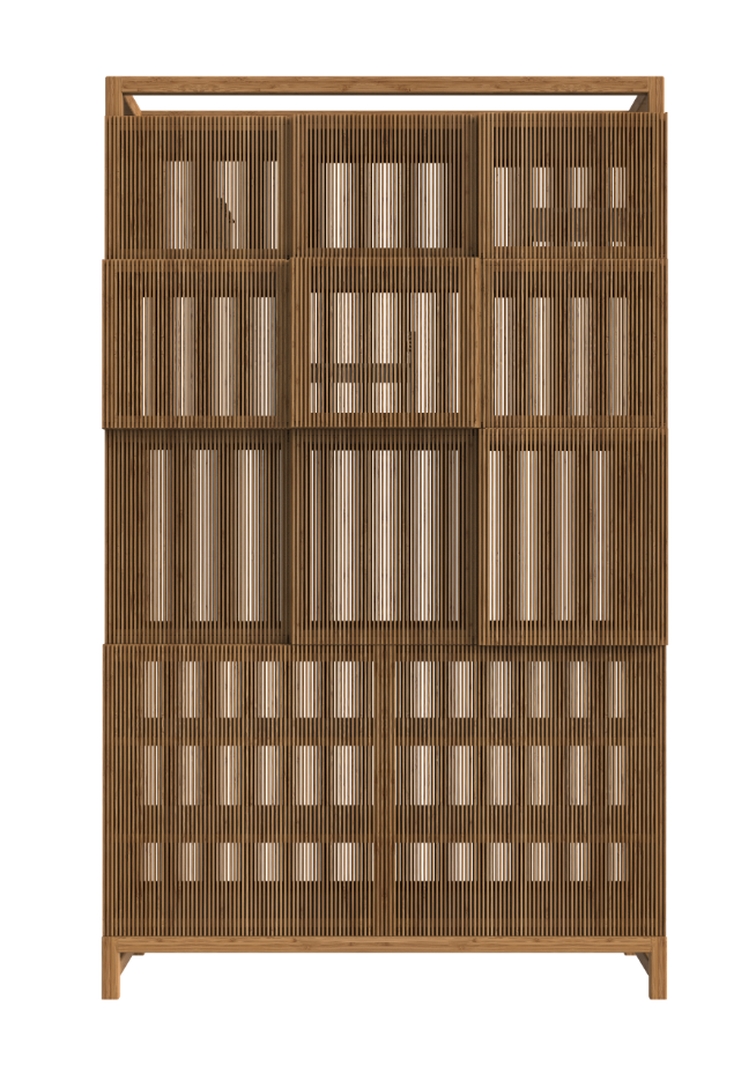
架讓
石大宇(中国台湾)/ 清庭
Shelf
Jeff Dayu Shi(CN-TW) / Dragonfly
2021
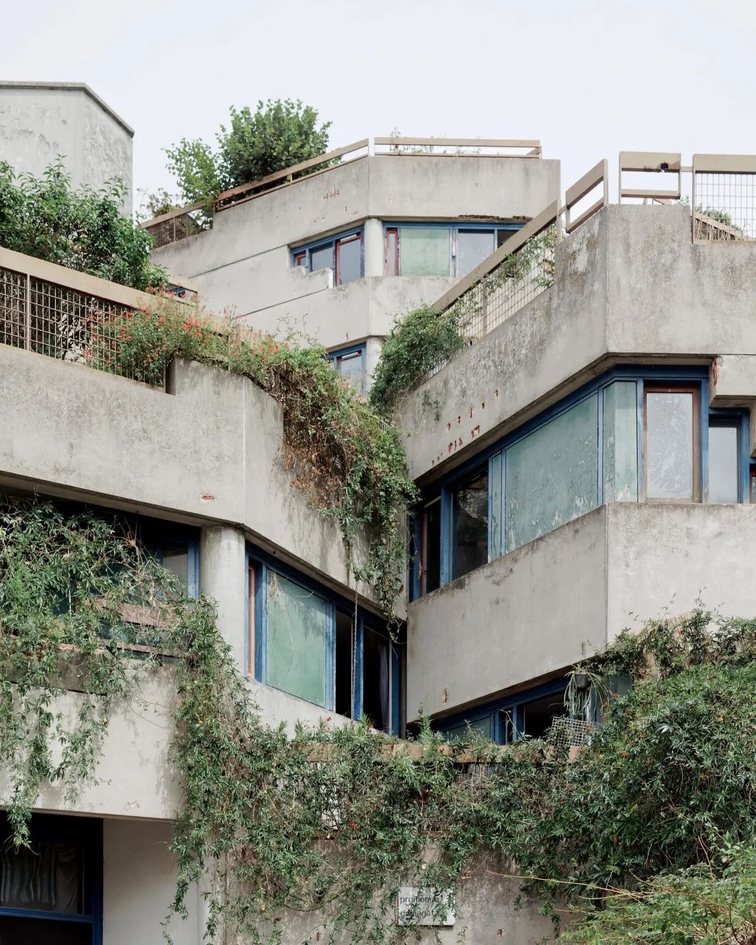
塞纳河畔伊夫里中心城区改造项目
建筑设计师:蕾尼·加尤斯特(法国)
摄影师:尼古拉斯·巴林顿 - 利奇(英国)
The Urban Renewal of Ivry-Sur-Siene
Architecture: Renée Gailhouset(FR)
Photography: Nichola Barrington-Leach(UK)
1971-1986
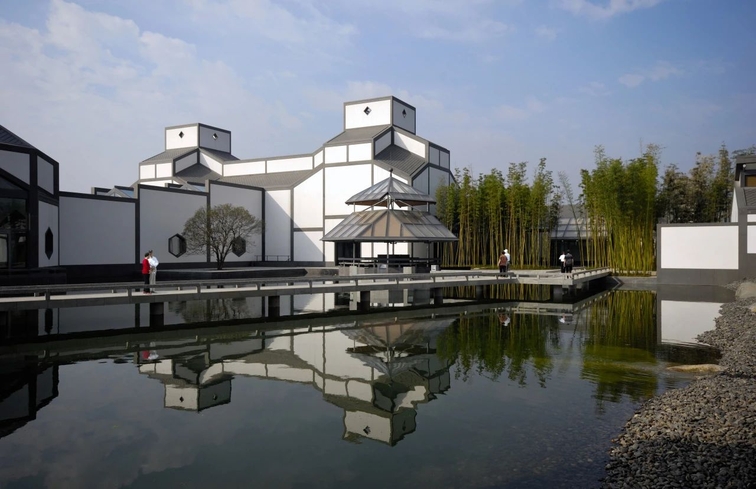
苏州博物馆
贝氏建筑事务所(美国)
Suzhou Museum
PEI Architects(US)
1978-2019
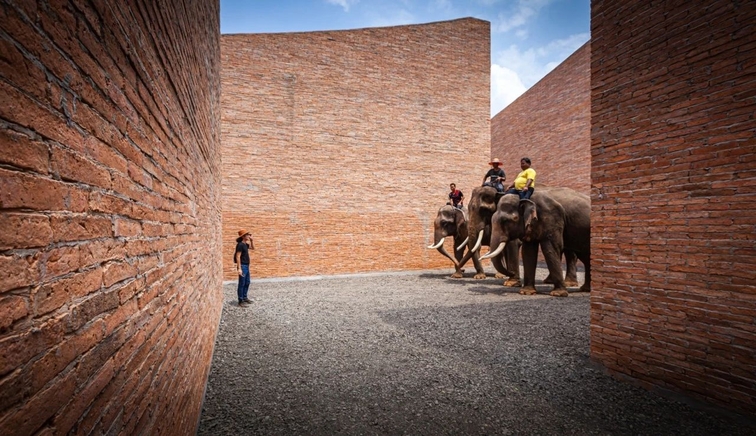
大象的世界
布恩瑟姆·普仑萨达(泰国)& 曼谷项目工作室
Elephant World
Boonserm Premthada(TH) & Bangkok Project Studio
2020

诗人之家
阿里雷萨·塔格哈勃尼(伊朗)& Next Office
Poet's House
2024年竣工
Alireza Taghaboni (IR)& Next Office
Completed in 2024
第一板块艺术家名单
Artists List of SECTION I
马岩松(中国)
贝氏建筑事务所(美国)
石大宇(中国台湾)
刘珩(中国香港 )
孟凡浩(中国)
许刚(中国)
诺埃米·布拉格(阿根廷)
塔皮奥·斯内尔曼(芬兰)
黄永才(中国)
查朋·春鲁迪(泰国)
叶敏(中国)
丁劭恒(中国香港)
晏俊杰(中国)
陈飞波(中国)
蕾尼·加尤斯特(法国)
尼古拉斯·巴林顿 - 利奇(英国)
布恩瑟姆·普伦萨达(泰国)
维努·丹尼尔(印度)
阿帕拉塔建筑事务所(英国)
东梅 & 刘小川(中国)
肖恩·德·布拉卡姆(爱尔兰)
凯伊·宋(英国)
阿里雷萨·塔格哈勃尼(伊朗)
Ma Yansong(CN)
PEI Architects(US)
Jeff Dayu Shi(CN-TW)
Doreen LIU(CN-HK)
Meng Fanhao(CN)
Xu Gang(CN)
Noemí Blager(AR)
Tapio Snellman(FI)
Ray Wong(CN)
Chatpong
CHUENRUDEEMOL(TH)
Michelle YIP(CN)
Allan Ting(CN-HK)
Yan Junjie(CN)
Bob Chen(CN)
Renée Gailhouset(FR)
Nichola Barrington-Leach(UK)
Boonserm Premthada(TH)
Vinu Daniel(IN)
Apparata Architects(UK)
Dong Mei & Liu Xiaochuan(CN)
Shane de Blacam(IE)
Kaye Song(UK)
Alireza Taghaboni(IR)
第二板块 关怀羁绊
SECTION II: Matters of Care
策展人:王乃一
Curator:Wang Naiyi
纵观历史,每当一个时代陷入危机与迷雾,人们总会试图走向未知的“应许之地”,走向依然模糊、仍旧危险的“无人之境”。对未来的过度期许与迷恋,使我们不可避免地陷入一种对“即将到来世界”的追逐之中,从而忽略当下此在的感知与征兆。“关怀羁绊”聚焦“当下”状态,以“关怀”介入时代的诸多迫切议题之中,而由此生发的实践将与每一个当下产生共鸣。
“关怀羁绊”借鉴了学者玛丽亚·普伊格·德拉贝拉卡萨的核心观点,体认其错综复杂的意涵同时,思考关怀的多种形式。多位享誉国际亦深耕在地的设计师、建筑师、思想家、活动家共同对这个一直存在但又愈加紧迫的议题做出回应,以设计传递善意,阐释“关怀”作为一种行动、一种状态、一种关系、一种省思等诸多维度。多重形态的关怀富有层次且精准地“嵌入”此时此刻之中,为观众营造了一个“沉潜时刻”,多个“关怀汇流”的现场构筑了一种进行式的居间状态,作为依然危机四伏当下的一个切面或片段,以悲悯心和敬畏心回应着世变。
这些使不同维度的关怀不断生发、蔓延的现场不仅作为广州设计三年展的“关怀之所”,更是“在场性”、“当下性”在物理及精神空间多层象征的重叠嵌套。我们如何与当下所置身的某时某处产生联结、形成关照?“关怀羁绊”希冀创造多个“共同在场”的时刻,在集体感知与个体经验的共振之中照见彼此,进而 ( 重新 ) 构想关怀的政治、伦理与潜能。
Throughout history, whenever an era falls into crisis and confusion, people will try to move towards the unknown “promised land” and the “uninhabited realm” that remains uncertain and dangerous. Excessive expectations and obsession with the future inevitably lead us to pursue the “upcoming world”, thus ignoring the perceptions and signs of the present moment. Matters of Care focuses on the “present” state, intervening in many urgent issues of the era with “care”, and the practice arising from it will resonate with every present moment.
Matters of Care draws on the concept of María Puig de la Bellacasa, recognizing its intricate implications while considering the various forms of care. Several internationally renowned designers, architects, thinkers and activists who have taken their roots locally have collectively responded to these ever present yet newly urgent matters of care. They express goodwill through design, and interpret “care” as a form of action, state, relationship, reflection, etc. The multiple forms of care are layered and accurately embedded into the present moment, creating a contemplative moment for the audience. The convergence of multiple “care” scenes constructs an ongoing intermediary state, as a section or fragment of the still perilous present, to respond to changes in the world with compassion and awe.
These scenes that constantly generate and spread care from different dimensions not only serve as the “place of care” for the inaugural Guangzhou Design Triennial, but also represent the overlapping and nesting of multilayer symbols of “presence” and “currentness” in physical and spiritual spaces. How do we care for the “here and now” we are currently in? Matters of Care hopes to create multiple moments of “co-presence”, to see each other in the resonance of collective perception and individual experience, and then (re-)imagine the politics, ethics, and potential of care.
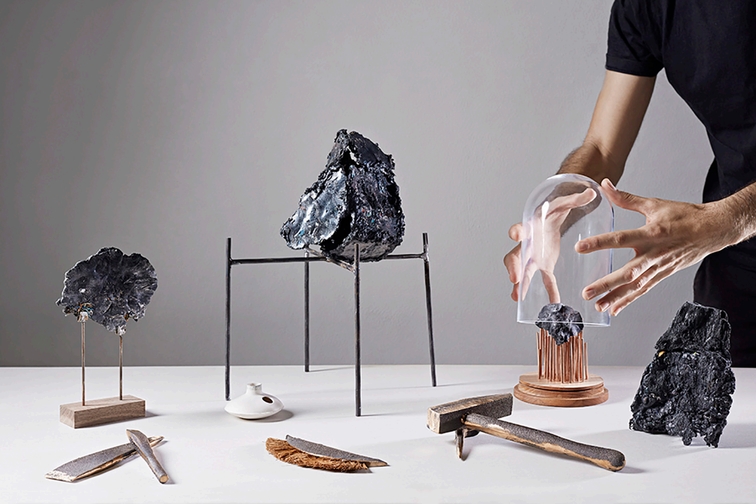
变质
沙哈·丽文 ( 以色列 )
2017 至今
Metamorphism
Shahar Livne(IL)
2017-ongoing
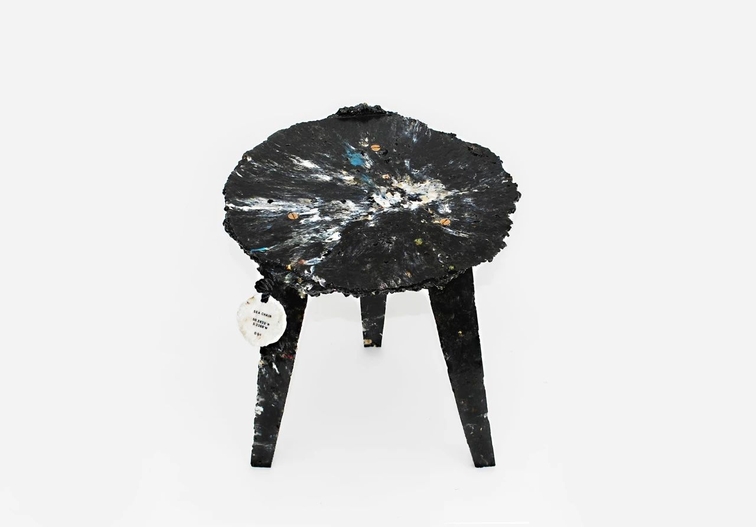
海洋之椅
A.A.Murakami 工作室 ( 村上梓 & 亚历山大·格罗夫斯 )
(日本 & 英国 )
Sea Chair
A.A.Murakami(Azusa Murakami & Alexander Groves)
(JP & UK)
2010
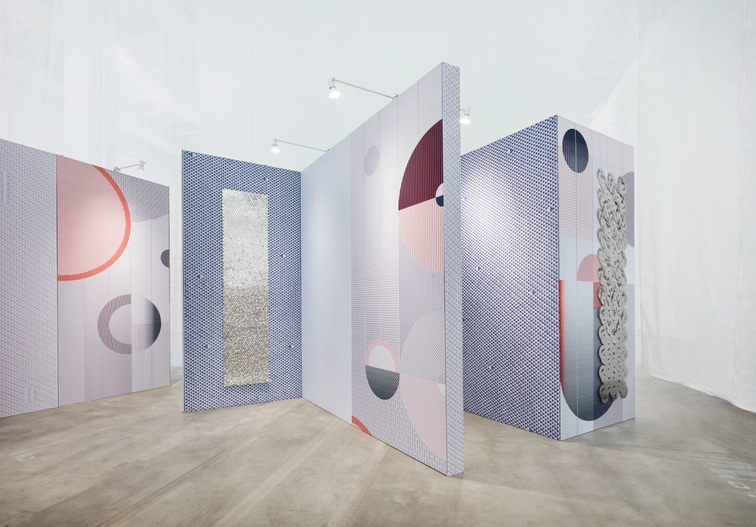
疗愈空间
Alissa & Nienke 工作室
( 艾丽莎·范·阿塞尔东克 / 尼恩克·邦格斯 )( 荷兰 )
Spaces for Well Being
Alissa & Nienke (Alissa van Asseldonk / Nienke Bongers) (NL)
2014-2023
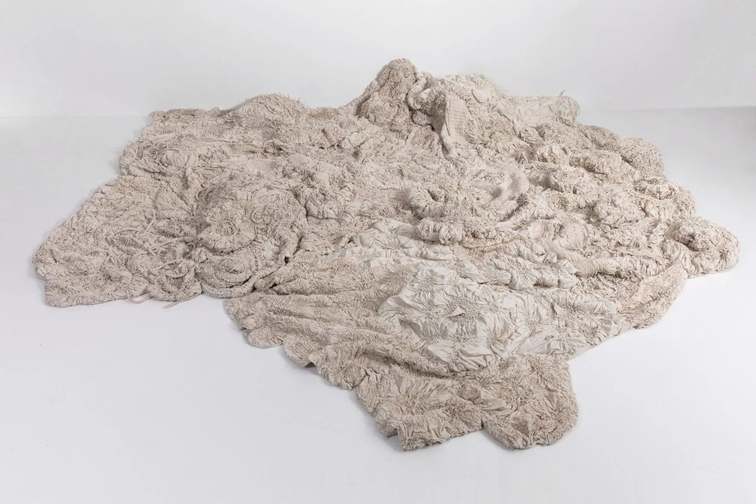
她的山丘 1 号 -5 号
林芳璐(中国)
She's Hills no.1-5
Lin Fanglu(CN)
2023
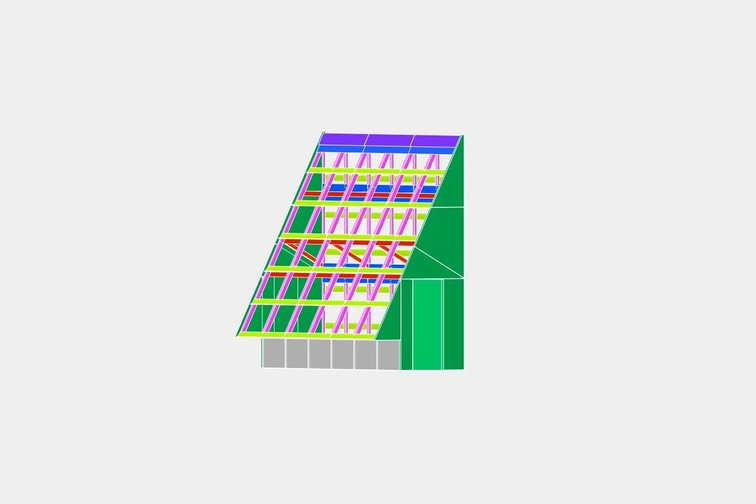
温室No.1 / 诊室No.1
MOS 建筑事务所
( 希拉里·桑普尔 & 迈克尔·梅雷迪思 )( 美国 )
Greenhouse No. 1Clinic No. 1
MOS Architects
(Hilary Sample & Michael Meredith)(US)
2023
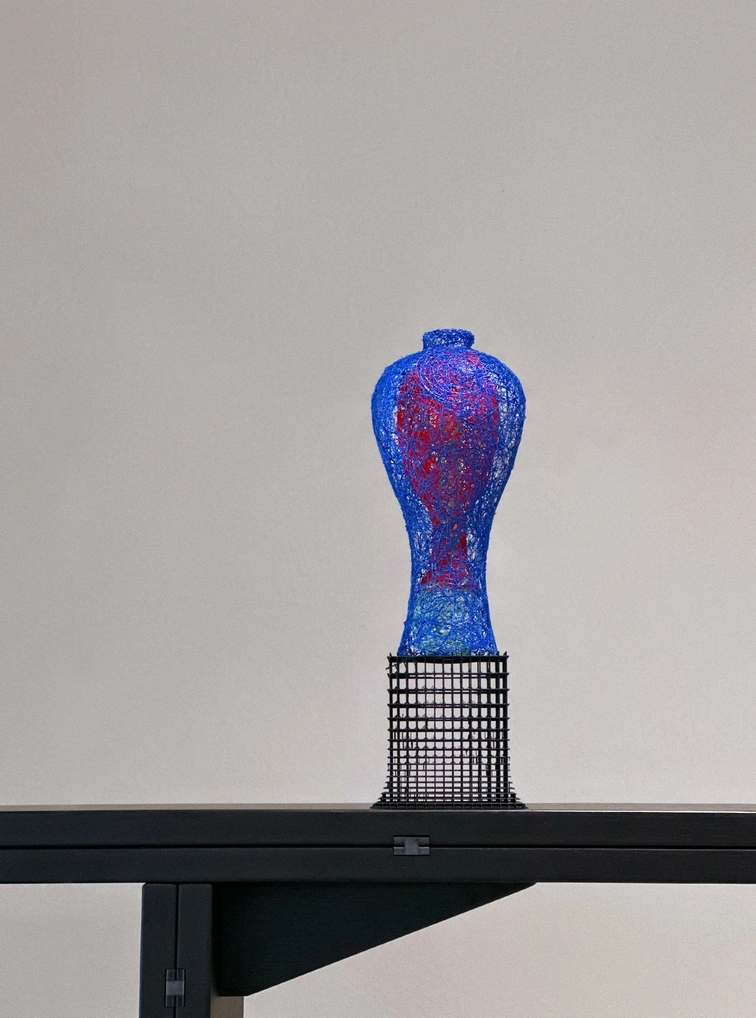
有冇用
陈旻 ( 中国 )
Uselessful
Chen Min (CN)
2020
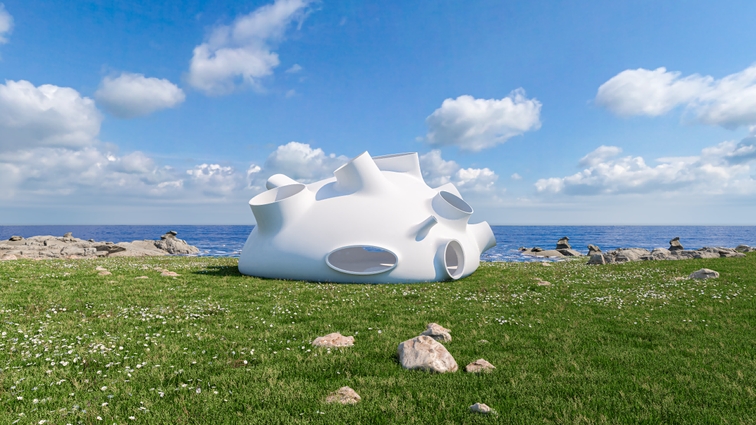
昼夜节律之家
科林·弗尼尔 ( 英国 )
Circadian House
Colin Fournier(UK)
2023
第二板块艺术家名单
Artists List of SECTION II
内里·奥克斯曼(美国)
黑曜石工作室 ( 乔瓦尼·贝洛蒂 & 阿莱桑德拉·科维尼 ) (荷兰)
安东·西比克 ( 意大利 )
科林·弗尼尔 ( 英国 )
Terreform ONE 建筑事务所 ( 米切尔·约阿希姆 & 薇薇安·关) (美国)
林芳璐 ( 中国 )
MOS 建筑事务所 ( 希拉里·桑普尔 & 迈克尔·梅雷迪思 ) ( 美国 )
幻影工作室 ( 安德烈亚·特里马奇 & 西蒙娜·法瑞辛 ) ( 意大利 )
土上工作室(中国)
阿尔瓦罗·加泰兰·德·奥康 (西班牙)
Alissa + Nienke 工作室 ( 艾丽莎·范·阿塞尔东克 & 尼恩克·邦格斯 ) ( 荷兰 )
沙哈·丽文 ( 以色列 )
陈旻 ( 中国 )
A.A.Murakami 工作室 ( 村上梓 & 亚历山大·格罗夫斯) (日本 & 英国)
埃里克·克莱恩贝克 & 马蒂德·德拉克 ( 荷兰 )
Neri Oxman (US)
Studio Ossidiana (Giovanni
Bellotti & Alessandra Covini) (NL)
Aldo Cibic (IT)
Colin Fournier (UK)
Terreform ONE (Mitchell
Joachim & Vivian Kuan) (US)
Lin Fanglu (CN)
MOS Architects (Hilary Sample
& Michael Meredith) (US)
FormaFantasma (Andrea
Trimarchi & Simone Farresin) (IT)
Onearth Studio (CN)
Alvaro Catalan de Ocon (ES)
Alissa + Nienke Studio (Alissa van Asseldonk & Nienke Bongers) (NL)
Shahar Livne (IL)
Chen Min (CN)
A.A.Murakami (Azusa Murakami & Alexander Groves) (JP & UK)
Eric Klarenbeek & Maartje Dros (NL)
第三板块 站在此时此地
SECTION III:Fully Alive,
Standing Here and Now
策展人:李德庚
Curator:Li Degeng
我们都生活在“此时此地”。
但当全社会都在追求更快速的改变,就意味着我们都忽略了“此时”,把幸福寄托给了“下一刻”; 随着交通越来越便捷,商业全球化不断蔓延,每一个“此地”都在逐渐丧失其独特性。近年来,随着人们的生活不断向线上迁移,甚至连人们在“此地”的在场都越来越虚无了。
似乎我们已不再生活在“此时此地”。
从种种迹象上来看,我们的生活并未因社会的加速变化而变得更幸福,反而,焦虑、彷徨、孤独、空虚、缺乏意义感与归属感等问题纷至沓来。
在这个专题展中,我们没有关注那些前卫的、激进的、革命的设计,而是把目光转向了我们身边的日常生活。我们希望设计能看得见真实的当下,关注到有血有肉的人,进入到有烟火气的日常生活中去。只有充分感知每一个“此时此地”的存在意义,在具体的设计行动中,设计师才有机会关照到更多元、更真实的需求,逐渐发现更深层次的问题,一点一滴地建立起切实可行的解决路径,在设计创作的过程中注入人性的温暖,就此,设计也将拥有修补社会伤痛的力量。
这个专题展将由三个单元构成,分别是 : 重新链接——旧资源的设计再利用 ; 轻设计,微改变——旧设计的迭代与修正 ; 有容乃大——折衷与退让的设计智慧。
This is our moment.
However, when the whole society pursues faster change, we ignore the “present moment”, and entrust happiness to the “next moment”. Modern transportation is getting more convenient and faster, and business globalization prevails. Each “here” is gradually losing its uniqueness. Recently, as people spend more and more time online, even their presence in the “here” is becoming formless and void.
It seems that we no longer live here and now.
Various signs reveal that our lives are not happier with the accelerating social progress. Instead, problems such as anxiety, confusion, loneliness, emptiness, lack of sense of meaning and belonging have emerged one after another.
Fully Alive, Standing Here and Now does not focus on avant-garde, radical or revolutionary designs, but keeps a watchful eye on the daily life. We want to display the real present in design works, pay attention to men of flesh and blood, and dive into the earthly life. Only by fully perceiving the significance of existence of each “here and now” can designers have the opportunity to care for more diverse true needs in specific designs, explore deeper problems, establish practical and feasible solutions bit by bit, and warm the work up with humanity. In doing so, design works would obtain the power to heal social pain.
This theme exhibition includes three units: Relinking: Design to Recycle Old Resources; Light Design, Minor Changes: Iteration and Revision of Old Designs; Greatness Lies in Capacity: Wisdom of Compromise and Concession in Design.
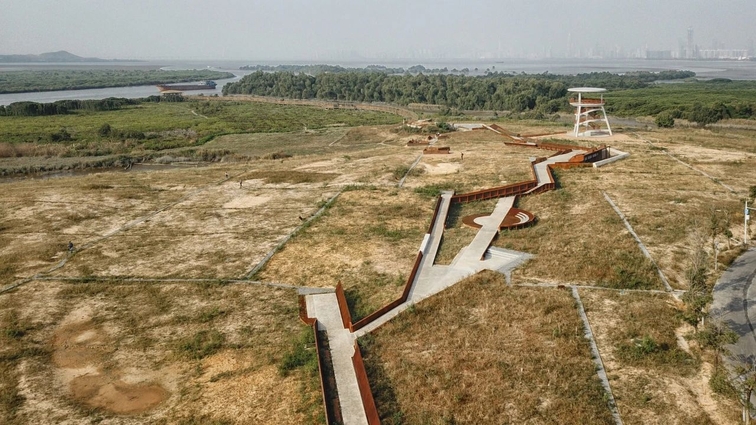
第十九界国际植物学大会纪念公园
庞伟(中国)
The Memorial Park for 19th International Botanical Congress
Pang Wei(CHN)
2020
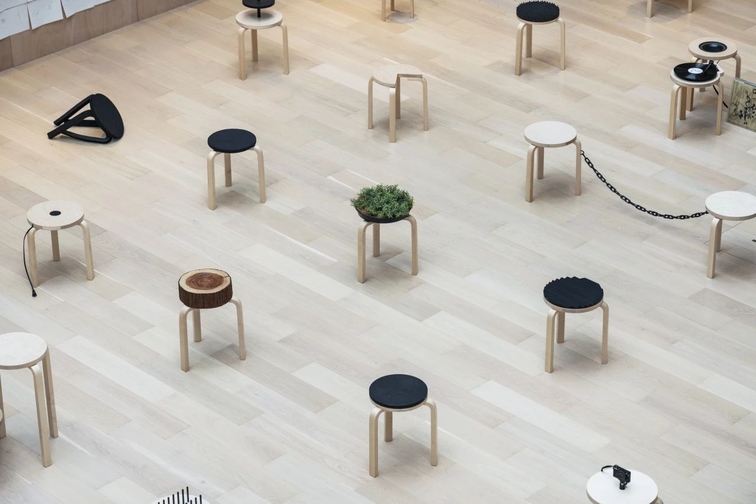
凳子的可塑性
元木大辅 (日本)
Hackability of the Stool
Daisuke Motogi(JP)
2019
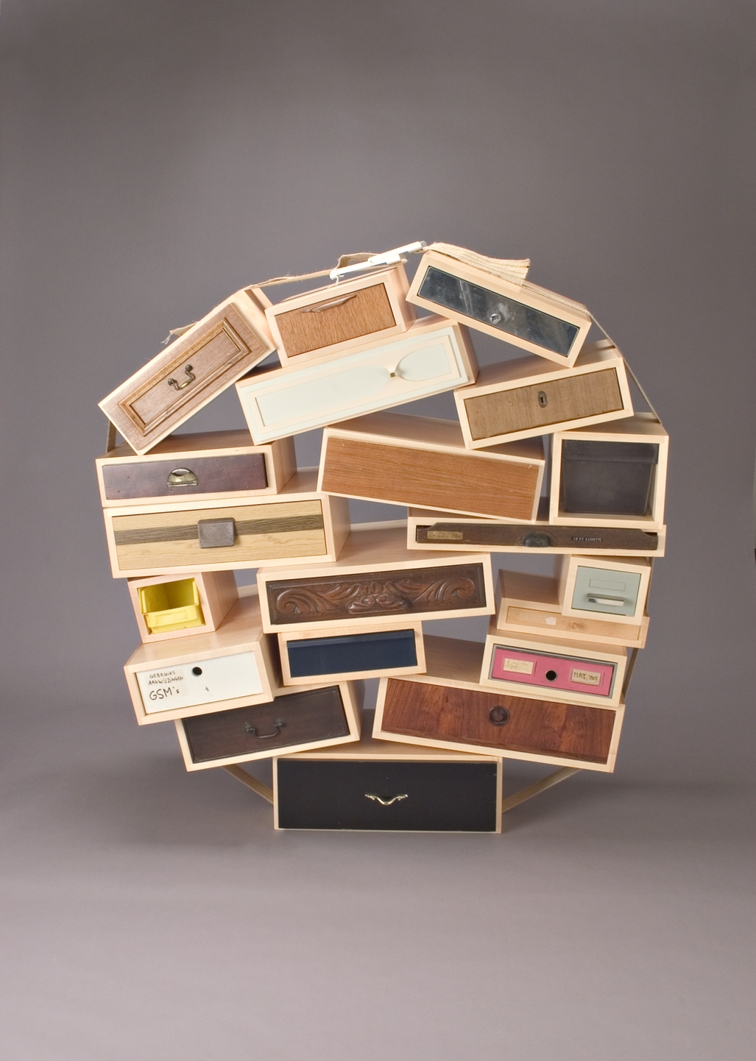
第 117 号抽屉柜:“你无法放下你的记忆”
特鲁·雷米(荷兰)
Chest of Drawers No 117:
‘ You Can’t Lay Down Your Memory’
Tejo Remy (NL)
1991
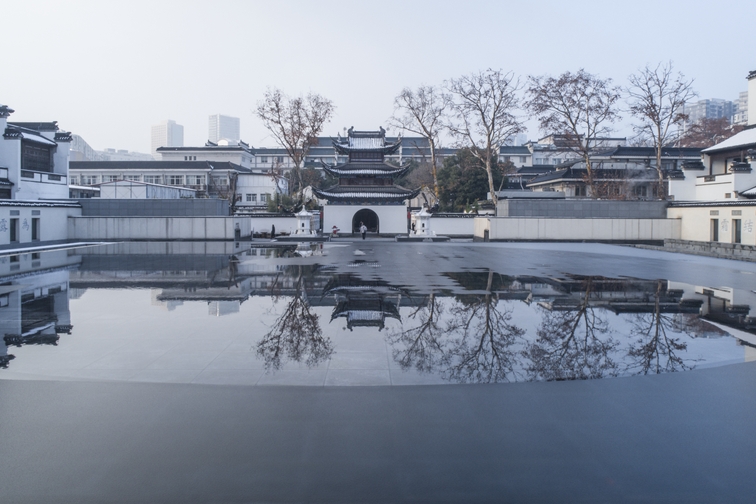
南京中国科举博物馆
刘克成(中国)
Nanjing Imperial Examination Museum of China
Liu Kecheng(CN)
2013-2014
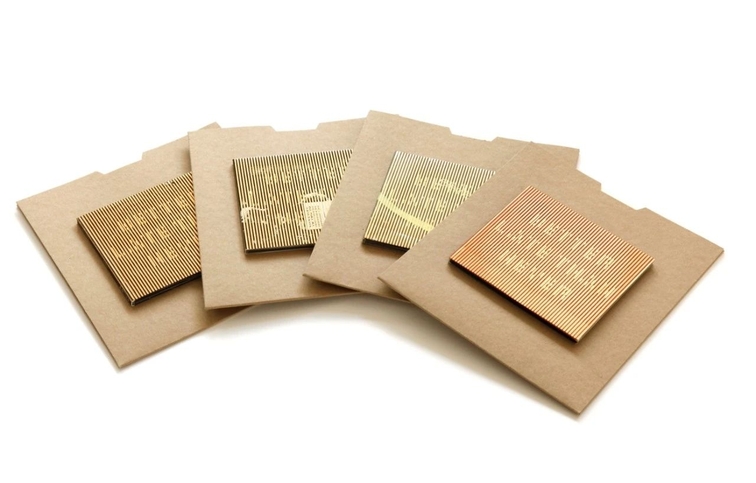
腰乐队《相见恨晚》
白冈冈(中国)
Kidney Better Late Than Never
Bai Ganggang(CN)
2014

阳朔糖舍酒店
董功(中国)
Yangshuo Sugarhouse Hotel
Dong Gong(CN)
2017
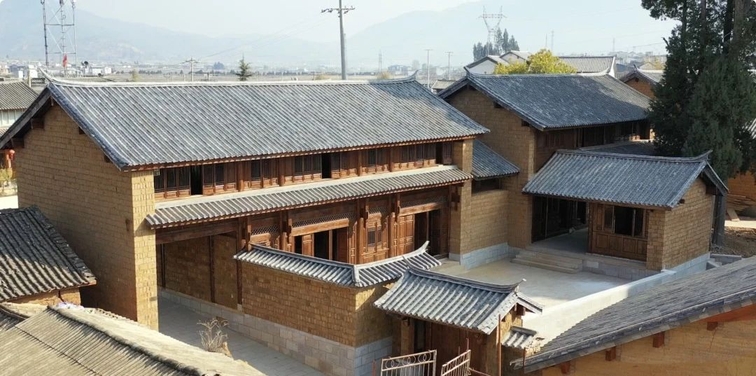
云南沙溪古镇改造
黄印武(中国)
2003 至今
Shaxi Rehabilitation Project
Huang Yinwu(CN)
2003-ongoing
第三板块艺术家名单
Artists List of SECTION III
张宝华(中国)
李旻(中国)
胡镇超(中国)
白冈冈(中国)
张雷(中国)
特鲁·雷米(荷兰)
董功(中国)
何镜堂(中国)
广煜(中国)
Makkink & Bey 工作室(荷兰)
元木大辅(日本)
王辉(中国)
黄印武(中国)
井口皓太(日本)
梅数植(中国)
薛天盟(中国)
清华大学美术学院生态设计研究所
刘新等(中国)
靳远(中国)
周子书(中国)
刘悦来(中国)
庞伟(中国)
何健翔 & 蒋滢(中国)
刘克成(中国)
张烁(中国)
许礼贤(中国)
Zhang Baohua(CN)
Li Min(CN)
Hu Zhenchao(CN)
Bai Ganggang(CN)
Zhang Lei(CN)
Tejo Remy(NL)
Dong Gong(CN)
He Jingtang(CN)
Guang Yu(CN)
Studio Makkink & Bey(NL)
Daisuke Motogi(JP)
Wang Hui(CN)
Huang Yinwu(CN)
Kota Iguchi(JP)
Mei Shuzhi(CN)
Xue Tianmeng(CN)
Eco-Design Research Institute, Academy of Arts & Design, Tsinghua University,
Liu Xin, etc.(CN)
Jin Yuan(CN)
Zhou Zishu(CN)
Liu Yuelai(CN)
Pang Wei(CN)
He Jianxiang & Jiang Ying(CN)
Liu Kecheng(CN)
Zhang Shuo(CN)
Xu Lixian(CN)
第四板块
设计:生存·生活·生命
SECTION IV
Design : Existing · Living · Being
策展人:又一山人 (黄炳培)
Curator:anothermountainman
(Stanley Wong)
创作,是商业的手段。
创作,是历史、文化以至个人情怀。
创作,是社会议题的灵感、对话、发声 ...
创作,是关于人生的事情。
这是我工作了三十年后归纳出创作价值、意图和切入的可能,亦于二〇一一年策划了“三十乘三十 what's next 对话 / 共创”项目,跟大家探讨的是:何谓创作,为何创作。
在大众的世界和设计使用者的角色,其实大都对设计有着很笼统模糊的印象,甚至不太认知。曾几何时,我也跟家中姐弟闲谈,解说给他们知道我的工作是做什么。“这漂亮餐牌就是设计……餐厅墙上的标志是设计……你坐着的凳是产品设计……桌面的台布图案是设计……钱包内的钞票也要设计……”
没错,设计专业以外(甚至部分专业内)的文明城市中人,对设计的责任、目的、其意义和可塑性,跟时代、科技的发展变得复杂的同时,其清澈度也变得“没有太深究”。
从远古的“工与艺”走到工业时代、后工业时代,直接进入后5G 数码阶段,设计的身份和价值,由当下二十一世纪走入明天的路途上,我们又️怎样重新分拆和归纳?
纵然,大家做设计 / 造设计都有着十万个目的和理由。是以这次我策展的框架,试图从“用家 / 社会大众”角度去感知和欣赏,甚至学习。圈中人也可与时并进,再思考再学习,设计今天对人类(当然及至其他生物)可带来什么附加价值和灵感。毕竟,我出身是个广告创作人,对市场用家的了解和利益出发,是个被训练出来的逻辑观念。
设计,能助人类生存,危机中有更好的基本生活条件和出路?
设计,能真正提升生活 ( 精神性 ) ?
设计,能直指生命的感悟和提升?
我亦感恩设计从业中持相同价值同行的“执行者”和“坚持者”,只因三年展篇幅有限,未能全都一一同场,敬请见谅。就当这是课题的一个例案和探讨角度之起点,在社会价值和人文关怀路上,一起继续努力。策划过程中,亦因种种、种种问题,未能将好些极具意义的创作展示给大家观赏学习,有请大家在补充文献资料区阅览。作为策展人要向大家说一句抱歉,希望日后再见。
Creation is a means of business.
Creation is about history, culture, and even personal emotions.
Creation is an inspiration, a dialogue and a voice on social issues...
Creation is about life.
After working in this field for 30 years, I finally summarized the values and intentions of creation, and possible approaches to it, and curated the project ‘30x30 What’s Next // Dialogue / Cocreation’ in 2011, focusing on:what is creation mean and why are we create?
The general public and design users have only a vague impression of design or even know little about it. I once explained to my siblings in a chat about my job: “this fancy menu is a design, the sign on the wall of the dining room is a logo design, the chair you are sitting on is a design, and so are the tablecloth on the table, and the banknotes in your wallet...”
It is true that design industry outsiders in contemporary cities (even some of insiders) rarely go seriously into design in terms of its responsibility, purposes, meanings and possibilities. as well as its clarity becomes blurry while the world increasingly moving complicated with internet technological development.
From the ancient age of “craftsmanship and artisanship” to the industrial age, and to the post-industrial age, human beings in the 21st century has directly entered the post-5G digital era. In this background, how shall we re-think and re-define ‘design’ in terms of its identity and values?
People do / make designs for thousands of purposes and reasons. In the framework of my curatorial direction for the exhibition, I try to perceive, appreciate, and even learn things from the perspective of ‘users / the general public’. People inside the profession can also keep up with the times, learn more, and re-think about what additional values and inspirations design can bring to humanity (and to other living creatures as well, of course). After all, as an advertising creative by profession, I tend to see things from my knowledge of market users and how to benefit them, which is a logical idea developed from my training.
Can design help phenomenons / situations of human existence and struggles in life, provide better basic living conditions and improvements?
Can design inspire our daily living, mindfully?
Can design enlighten us (human beings) about the true meaning of our life?
I’m also grateful to my persevering peers who share the same values with me. I regret we cannot present all of them due to the limited space of the triennial exhibition. Let’s take it as a case study presentation and a starting point for further discussions, and keep your concerted efforts to drive towards social good and humanistic values.
During the planning process, due to many unsettled reasons and hurdles, we could not include many meaningful design cases in this exhibition, which can be read in the additional / supporting design information area. As the curator, I would like to express my apology to you all. I hope to see you again.
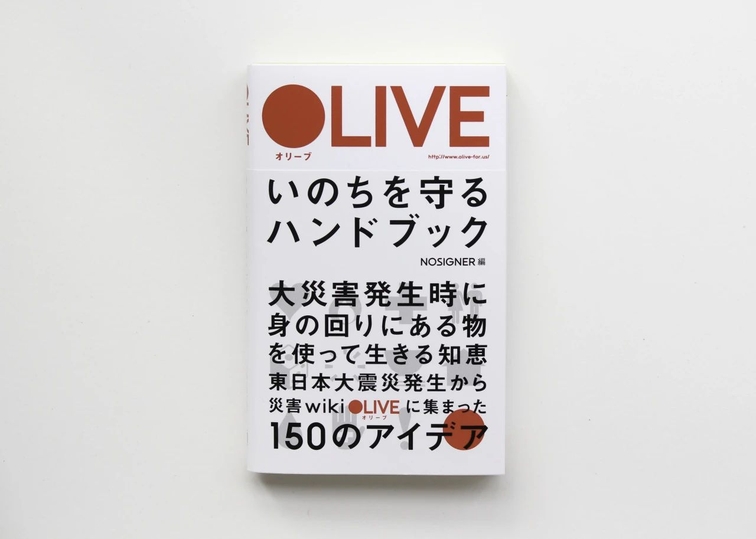
OLIVE
NOSIGNER(日本)
2011 至今
OLIVE
NOSIGNER(JP)
2011 ongoing
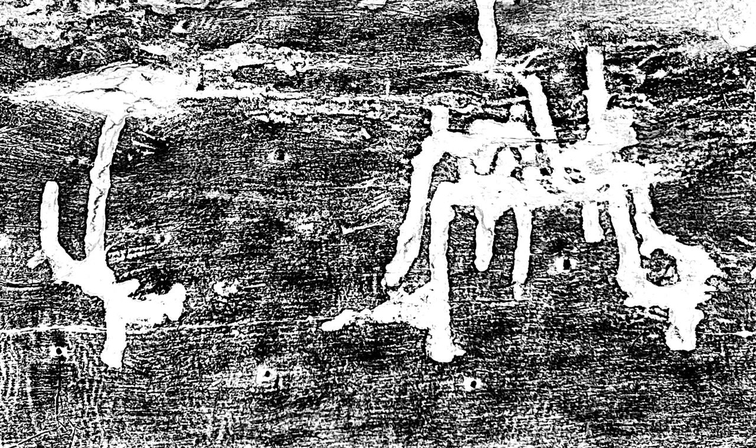
天牛版画家
朱赢椿(中国)
Longicorn Printmaker
Zhu Yingchun (CN)
2023
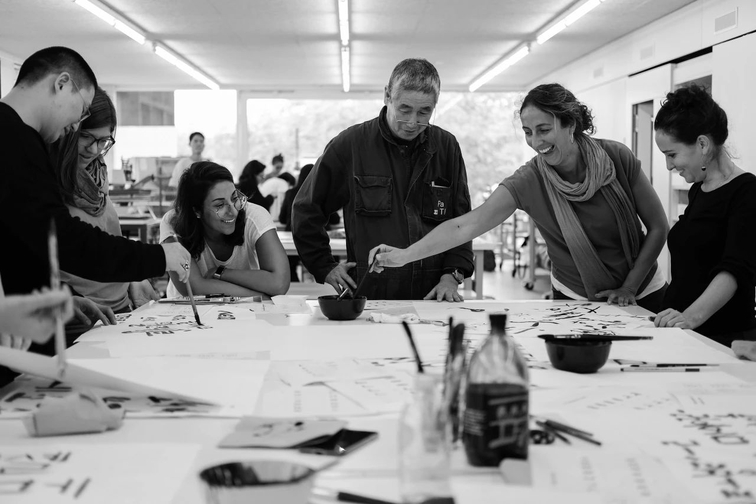
坡州字体设计学院教育项目
坡州字体设计学院(韩国)
2012 至今
PaTI Educational Program
PaTI(KR)
2012-ongoing
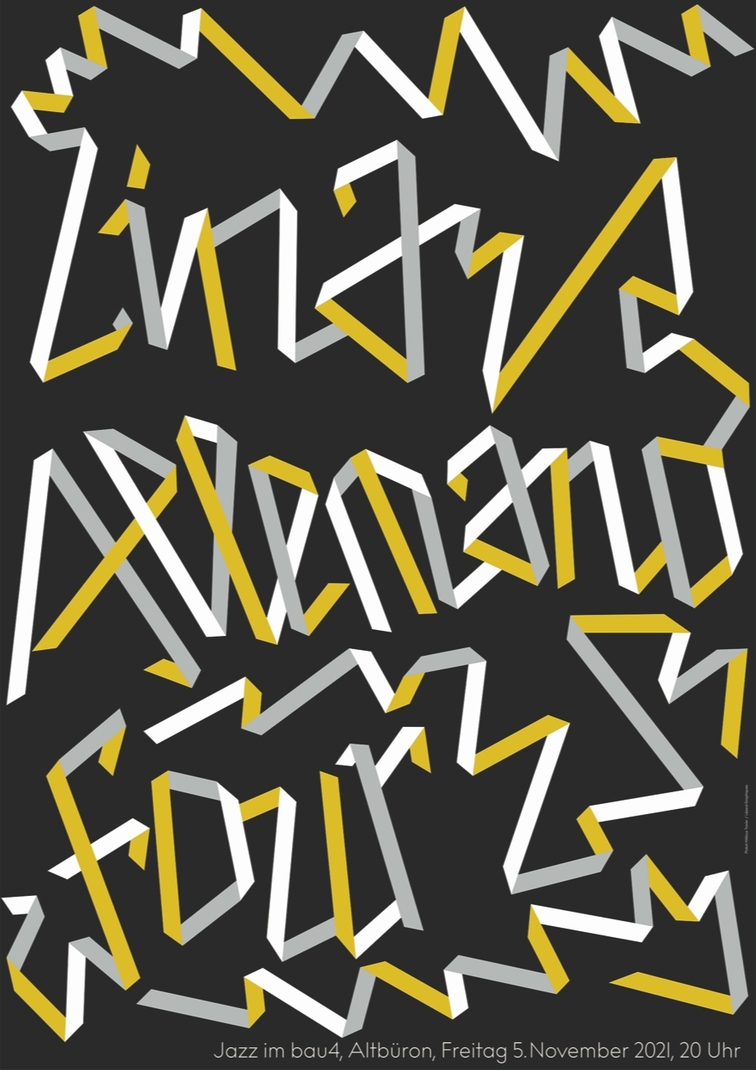
莉娜·阿莱马诺 4 号
尼古拉斯·卓思乐(瑞士)
Lina Allemano Four
Niklaus Troxle(CH)
2021

深圳梅丽小学
朱竞翔(中国香港)
Shenzhen Meili Primary School
Zhu Jingxiang(CN-HK)
2018
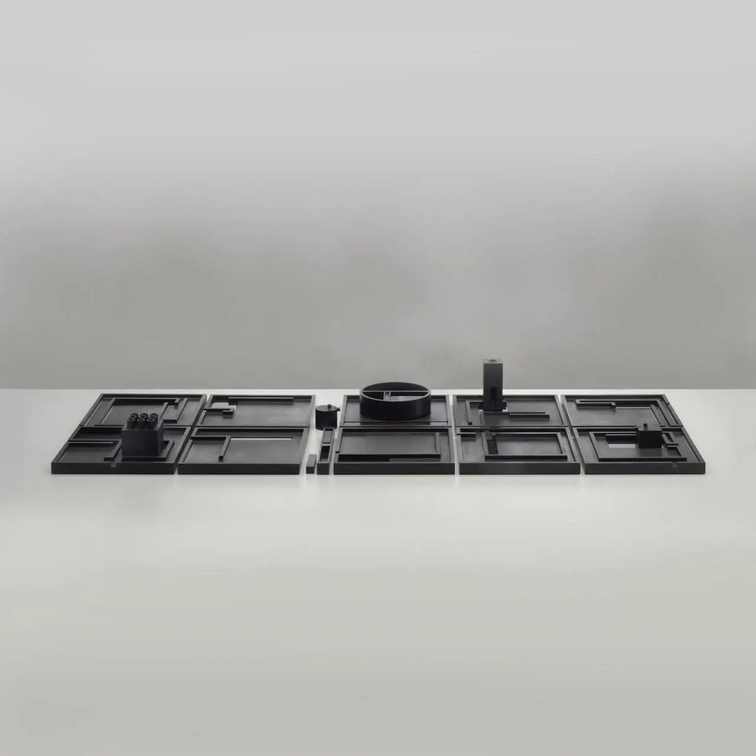
无声语言的字母
卢志荣(中国香港)
The Alphabet of a Silent Language
Chi Wing Lo(CN-HK)
2016
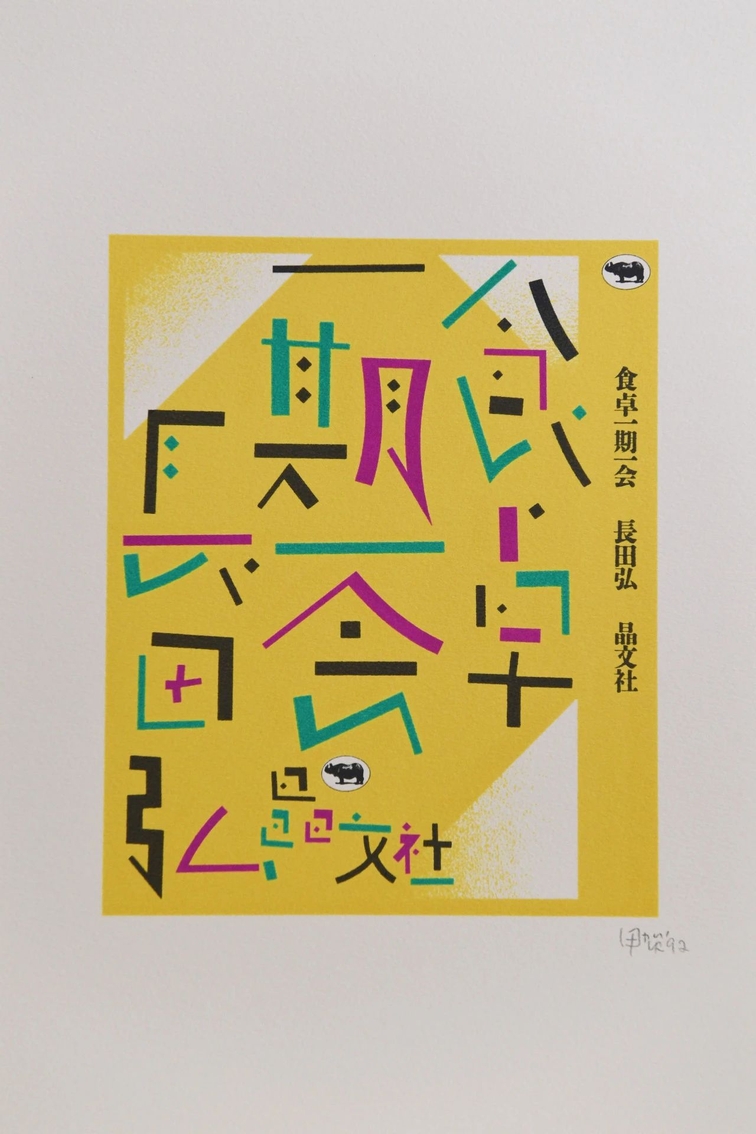
甲贺石版画
平野甲贺(日本)
Kouga Lithograph
Hirano Kouga(JP)
1991-1992
第四板块艺术家名单
Artists List of SECTION IV
NOSIGNER(日本)
朱竞翔(中国香港)
何志森 Mapping 工作坊(中国)
夏冰莹(加拿大)
启民创社(中国香港)
CoDesign / CoLAB(中国香港)
平野甲贺(日本)
靳埭强(中国香港)
韩家英(中国)
何见平(德国)
安尚秀(韩国)
新村则人(日本)
阿格涅斯卡·达捷扎克(波兰)
巴勃罗·迪·菲尔马(阿根廷)
浅叶克己(日本)
史蒂芬·施德明 (奥地利)
李思颜 & 郑凯伦 & 刘国耀(马来西亚)
another design(中国)
D & Department Project(日本)
张哲恺(中国)
尼古拉斯·卓思乐(瑞士)
坡州字体设计学院(韩国)
永井一正(日本)
卢志荣(中国香港)
原研哉(日本)
朱赢椿(中国)
马可(中国)
熊超(中国)
NOSIGNER(JP)
Zhu Jingxiang(CN-HK)
Mapping Workshop(CN)
Bingying Xia(CA)
Enable Foundation(CN-HK)
CoDesign / CoLAB(CN-HK)
Hirano Kouga(JP)
Kan Tai-Keung(CN-HK)
Han Jiaying(CN)
Jumping He(DE)
Ahn Sang-soo(KR)
Norito Shinmura(JP)
Agnieszka Dajczak(PL)
Pablo Di Firma(AR)
Katsumi Asaba(JP)
Stefan Sagmeister(AT)
Gigi Lee & Joshua Tay &Law Kok Yew(MY)
another design(CN)
D & Department Project(JP)
Zhang Zhekai(CN)
Niklaus Troxle(CH)
PaTI(KR)
Kazumasa Nagai(JP)
Chi Wing Lo(CN-HK)
Kenya Hara(JP)
Zhu Yingchun(CN)
Ma Ke(CN)
Jody Xiong(CN)
宣传片
开放时间:每周二至周日9:00-17:00(逢周一闭馆)
每日16:30停止入场
地址:广东省广州市越秀区二沙岛烟雨路38号
咨询电话:020-87351468
预约观展:
通过微信公众号实名注册预约,到馆出示预约二维码、预约人身份证进馆。如需预约改期请先取消预约重新预约。每个成人限带1名儿童(未满14周岁)。
目前仅接受散客(个人)参观。
相关文章
媒体报道

